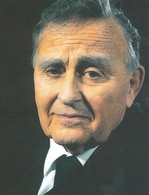
John Anderson
Inducted 2018
The following is a Biography Sensei John Anderson wrote about himself before his death.
Summary of Contributions to Judo
- Began Judo in 1946 in Honolulu Hawaii
- Senseis: T. Ishakawa, Donn Dreager, Kenzo Uyeno and Larry Miyamoto
- 10 times AAU Shiai Champion State of Maryland
- 5 times Champion East Coast A.A.U. Championships
- 4 times East Coast Masters Championship
- 12 times US National Masters Shiai Championships
- US National Referee since 1969
- Chairman USJI National Teachers Institute Committee
- Teaching Staff: Sensei Fukuda Joshie Training Camp
- Teaching Staff: 1982 US OC, Colorado, 1993 US OC Lake Placid
- Founder and Chairman of Maryland Judo Inc. and Maryland Governing Body Promotion Board
- National Kata Judge since 1976
- Director: USJI Katame no Kata
- Member USJI Kata Board of Examiners
- Member USJI Judge Certification Committee
- Member USJI, Joshie Development Committee
- 1st and 2nd Vice President of the United States Judo Federation
- Founder and President, Shufu Yudanshakai
- Shufu Promotion Committee Chairman and Rank Registration Chairman
- Member USJF Kata Development and Certification Committee
- Director Emeritus of USJF Board of Directors Chairman of the USJF Standards Committee
- National Tournament Committee Member (hosted the Senior Nationals in Baltimore in the 1970s)
- Officiated at the 1996 Olympic Games in Atlanta
John Anderson was the recipient of many awards including the Judo Greats Award as well as being acknowledged at the Japanese Ambassador’s home as the first non-Asian Kodokan Hatchidan (8th degree black belt) and for assisting the USA – Japanese friendship and cultural exchange.
Stories of Sensei Anderson
John Thomas Anderson was born and raised in Savannah, Ga. growing up in Savannah; Mr. Anderson was undersized and got picked on by schoolyard bullies.
“I was always a kid that the other kids chased down and tried to beat up,” Mr. Anderson told The Baltimore Sun in a 2001 article. “Although I used to do a lot of fisticuffs with them, I was always on the losing end.”
He was 16 when he tried to enlist in the Navy in 1945. Regulations required recruits to weigh at least 118 pounds – Mr. Anderson was 114 pounds. He ate five pounds of bananas before the weigh-in and was approved at 17 years old.
He joined the submarine service and trained as a welder and metalsmith, stationed in New London, Conn. After World War II, he was shipped to the Pacific, where he and his crewmates witnessed an Atomic bomb test from the deck of their ship.
In 1946, while in Honolulu, he and his Navy buddies saw Asian men in a building tossing each other around on mats. He was told the place was a dojo, a martial arts training area, and asked if they could practice.
“After a little hesitation they said, ‘Yeah, come on in’ they immediately threw us all over the place,” he recalled in the 2001 interview. “The other two guys didn’t go back, but I did.”
Mr. Anderson founded the Baltimore Judo and Jiujutsu Institute of Maryland, which later became the Baltimore Judo Club, where he taught for a half century until 2008. He often funded its operation out of his own pocket in addition to his labors on its behalf.
He founded Baltimore Judo Club when he was a sankyu. He taught everything that he himself learned, and discovered for himself an ancient wisdom in the process: Docendo Discimus (“in teaching, we learn”). He had this motto posted on the wall of the dojo in a carefully hand-lettered sign. He studied with great teachers including Sensei Donn Draeger, Sensei Minamoto, Sensei Ishikawa, and Sensei Ueno. He studied with the most casual student who visited Baltimore Judo Club. There was something to learn from everyone and in every situation.
As a Master Instructor and grappling enthusiast, Sensei Anderson is credited with developing the “compression lock” which is in common use in Judo and BJJ today. Eric Spears acclaimed, “After a previous full day clinic on arm locks I won all of my matches at my Shodan promotional with arm locks he had shown us.”
He built the mats at Baltimore Judo Club. He shared with me the details of their construction: plywood, 2 x 4s, carpet padding, and horsehair upholstery material supporting a layer of commercial mats wrapped in a hand-cut, hand-sewn vinyl cover. He didn’t buy these mats. He made them. He told me about them in so much detail that I feel certain he expected me to build my own set down the road. He had expectations like that.
Terence McPartland reflected, “One of the greatest days in my Judo career was John entrusting me with a key to the Judo club. I was moved that he trusted me to open the dojo on Saturdays. I did not then understand that he was passing more than just the key to the door. He was inviting me to serve Judo as he had invited so many others.”
John Anderson taught us many things we never expected to learn in Judo. When I was injured, he had me watch multiple pairs of randori partners and score all their throws. He critiqued my scoring and the lapses in my attention to what all was happening. In the process, he trained me to see Judo better and to manage a mat full of judoka. At the time, I did not realize that he undertook to teach me how to teach Judo.
John invited everyone into Judo. He worked with the talented and the athletic. He worked with the injured and scarred. He worked with those whose hearts were broken and those challenged by mental illness. When you bowed onto John’s mat, you could be assured of a hand to pull you up.
In the early days of Shufu, John Anderson and Jimmy Takemori traveled up and down the eastern US giving clinics and holding promotionals, expanding Shufu from the Baltimore/Washington SMSA to the entire eastern seaboard.
“The philosophy of judo is to give way to force,” Mr. Anderson told The Baltimore Sun. “Ninety percent of all tussles on the street happen because people talk. They say the wrong thing. Many times I’ve encountered people and just ignored them. If I brought them here on this mat, I think I could absolutely destroy them. But it serves no purpose to do this.”
John displayed the ultimate alchemy of Judo. By learning to assess one’s opponent, a competitor or coach can find out how to throw, pin, choke or armlock them. By learning to assess one’s students, a teacher can help shape, polish, and support them in learning and growing in self-knowledge. By learning to see others, a true judoka can transform his own heart. I never knew John Anderson the scrappy Savannah sailor. I never knew him as the consistent champion. I certainly heard those stories. I knew him when Judo had transformed his heart into a tender observer of others. Even if he still was thinking about how to choke you.
See also a post from Chuck Medani
The Shufu website now has an expanded article about Mr. Anderson, which summarizes his judo career, from when he started learning judo to his many roles as a teacher and leader regionally and nationally.
See a video of John Anderson demonstrating hadaka jime.
*Special thanks to the Baltimore Sun and Jerry Hays for the historical references.
Photo courtesy of Chuck Medani

0 Comments